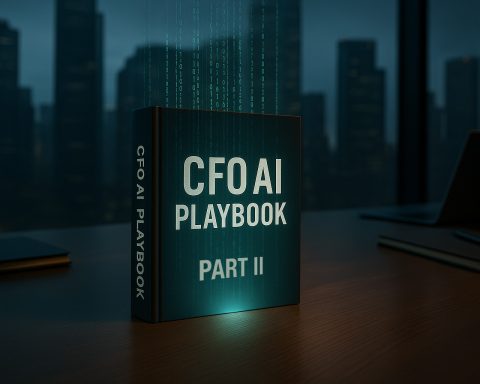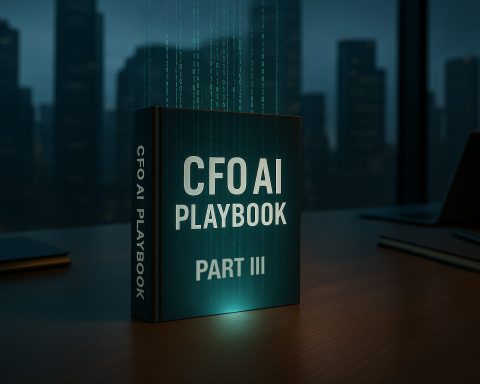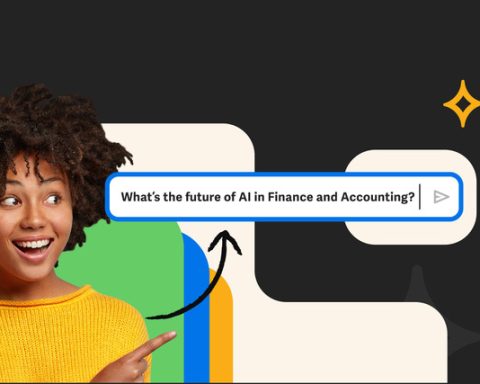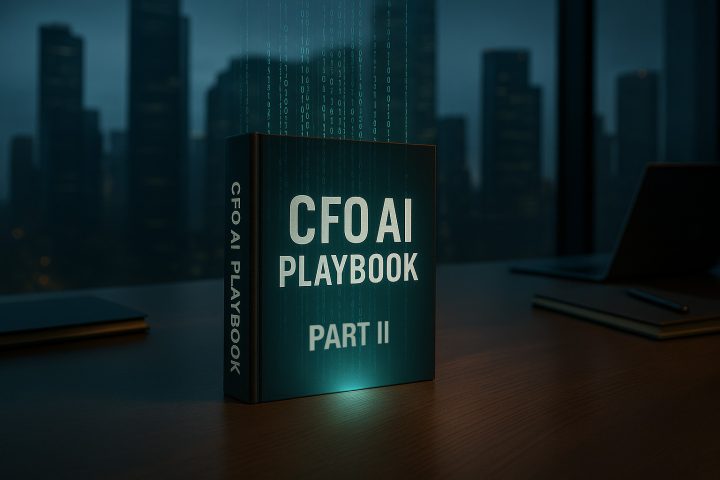Introduction
More than seven million Americans are in transition, and not by choice. Most have stories that do not fit cleanly into drop-down menus or keyword filters. These are people with real experience, real instincts, and real contributions left to make, struggling to be seen in a system that no longer values how they show up.
This guide was written for them. For you.
This is not a motivational speech. It is not a complaint. It is a blueprint. A calm, deliberate walk through ten actions that you can still take, strategically, meaningfully, and on your terms.
You are invited to slow down, think critically, and engage emotionally. These pages are not meant to be skimmed. They are meant to be kept, revisited, shared, and used.
What follows is not a fix for everything. It is a way forward, even when the system says otherwise.
1. Navigating the System
The modern job market, is increasingly built to serve volume rather than connection. Applicant tracking systems often filter out qualified candidates before a human ever sees their name. Job boards, once a primary gateway to opportunity, frequently yield silence. Even referrals, long considered a dependable path in, convert only about half the time for most job seekers.
This is not a reflection of your value or your effort, but rather a sign of how the system has shifted around you.
The first step toward regaining momentum is recognizing that high activity does not always translate to meaningful progress. Applying to twenty roles in a day may feel productive, but the data shows that fewer than two percent of online applicants advance without an internal referral or personal contact.
Instead of continuing to invest time in strategies with diminishing returns, consider a more intentional approach. Narrow your weekly focus to three to five companies that align with your values, your skills, and the kind of work you are energized to do. Take time to understand their business, their leadership, and the problems they may be trying to solve. This shift allows you to move from applicant to strategist, from one of many to someone with a clear reason for reaching out.
If you choose to engage, avoid the path of least resistance. Do not settle for submitting through a portal and waiting. Write the message that an applicant tracking system will never forward. Reference a challenge you have noticed, connect to something in their strategy, or offer a brief insight based on your experience. The goal is not to pitch, but to contribute. When possible, reach out to someone who has influence over the outcome, whether a department head, peer leader, or senior team member.
The job market may feel overwhelming, and in many ways, it is. There is a difference between the effort that burns you out and the effort that moves you forward. By shifting your focus from broad visibility to specific alignment, you increase the likelihood of finding a role where your contribution is not only noticed, but needed.
You do not have to fight harder to win a game designed to leave you behind. You just need to stop playing it on the system’s terms.
2. Go Where the System Has Not Been Built Yet
While automation has overtaken much of the hiring landscape, there are still places where relationships matter more than filters. These are the conversations happening between trusted peers, the introductions made over email by someone willing to vouch for your work, and the quiet recommendations shared in leadership circles where hiring decisions often begin long before any posting goes live.
These spaces are harder to access through formal channels, and that is precisely why they still work.
If the job market has become impersonal, the solution is not to push harder against its machinery. The more effective move is to lean into the places where human judgment still carries weight. For many in transition, that begins by reconnecting with the people who already know your character, your capabilities, and your contribution, not to ask for a favor, but to share your direction with clarity and intent.
When you reach out to your network, be specific. General updates rarely lead to specific help. Instead of saying, “I’m exploring new roles,” say something more focused:
“I’m looking for senior operations opportunities in growth-stage B2B companies. I’ve scaled teams through post-acquisition transitions and built margin discipline across three divisions. If you know someone who might benefit from that kind of experience, I’d be grateful for an introduction.”
Clarity earns attention. Vagueness blends into the noise.
Some introductions will lead nowhere. Others may open doors quietly. Over time, this approach builds a different kind of momentum, one based not on application volume but on connection density. You are not trying to reach hundreds of people. You are trying to matter to a few of the right ones.
The system was built to scale hiring. It was not built to recognize potential. That means the burden falls to you to show up in the places the system cannot reach.
Referrals are not an outdated tactic. They are one of the few remaining channels where real trust still moves faster than technology.
3. Shift from Applicant to Advisor
When a system reduces people to keywords and filters, it becomes difficult to stand out by following the rules. Most résumés, even the strong ones, read like records of employment rather than demonstrations of impact. And most cover letters, no matter how tailored, still place the applicant in a posture of request, hoping to be chosen, hoping to be seen.
At a certain level of experience, that framing does not reflect the truth of your value. You are not simply looking for a job. You are prepared to solve problems.
This is where a subtle but powerful shift in approach can change everything. Instead of presenting yourself only as a candidate, begin showing up as someone capable of offering insight. Approach companies as if you are already their advisor. You are not selling a résumé. You are helping them think more clearly about their own business.
This does not require arrogance. It requires perspective.
Start by identifying a challenge the company might be facing. These are genuine issues that real leaders are trying to solve, often under pressure and without complete information. If you have navigated something similar, you have something worth offering.
Your outreach can be brief and focused:
“I saw that your team is expanding into the Southeast. When I helped lead a similar rollout, we uncovered a few obstacles that slowed our traction early. I would be glad to share what we learned if that’s helpful.”
No résumé attached. No ask. Just value.
Sometimes that message will be ignored. Other times, it will lead to a conversation. Occasionally, it will open a door you did not know existed, because problem solvers often get hired before roles are written.
Framing yourself as an advisor does not mean pretending to have all the answers. It simply means acting with the confidence of someone who has already contributed at a high level and knows how to spot patterns. When companies are moving quickly, they do not always need more applicants. They need more clarity.
You can provide that, but only if you stop waiting to be invited to the table.
You do not need permission to be helpful. You just need to start helping.
4. Build a Personal Hiring Funnel
In times of transition, uncertainty tends to create clutter. There are job leads coming from different directions, conversations that never fully resolve, interviews that stretch out across weeks, and a growing list of follow-ups that can easily slip through the cracks. Without structure, even the most well-intentioned search can begin to feel chaotic.
Many professionals would never run a business or a sales pipeline without clear tracking and intentional process, yet approach their job search with none of the same discipline. That imbalance is not a reflection of capability. It is a consequence of being thrown into unfamiliar territory without a framework.
This is where a personal hiring funnel becomes more than a tool. It becomes a way to reclaim control.
Start by organizing your search like a business development process. Identify your top targets, not just companies, but people worth reaching out to. Track your touchpoints, from initial outreach to follow-ups to decision points. Document who referred you, when you last checked in, and what the next logical step might be.
A simple spreadsheet or CRM-style tracker is often enough. The goal is not to overengineer the process, but to stop relying on memory and emotion to carry what should be a system. When done right, your funnel creates clarity about where your energy is going and where it produces results.
This structure also helps normalize the unpredictability of the process. Just like in sales, not every lead will convert. Not every warm contact will follow through. Not every conversation will lead to an opportunity. With a funnel in place, you can see patterns. You can identify which industries are most responsive, which messages resonate, and which introductions tend to open doors.
That visibility gives you leverage. It allows you to adjust your strategy, refine your focus, and protect your time.
If you can manage a pipeline in your career, you can manage one for your career.
5. Use This Season to Build Authority, Not Just Land a Job
Periods of transition often bring pressure to go quiet. The instinct to retreat, to wait until something is certain, or to avoid appearing too visible while unemployed is understandable. Many professionals carry the weight of a narrative that says authority only comes after the offer, after the title, after the company name has been restored beneath the email signature.
That narrative is incomplete.
Authority is not a job title. It is a voice, a presence, and a body of thought. It is how you engage with your industry, how you show up in moments of uncertainty, and how others can see your value when no one is paying you to display it.
This season, while difficult, can also be a defining one. It creates space to build signal. Visibility, when used with intent, has the power to change how you are perceived and what opportunities begin to find you.
Consider writing about a challenge you solved or a trend you are seeing in your industry. Share a perspective on LinkedIn that reflects your experience. Offer to guest speak in a peer group or contribute to a conversation where your background is relevant. Visibility does not mean marketing yourself aggressively. It means staying present and engaged, even when the system suggests you should disappear until you are hired again.
Publishing your thinking does not require perfection. It requires practice. Speak in your voice. Share what you know. Allow others to see how you think, not just where you have worked.
Authority is built through contribution. You are still capable of contributing, even in a season of waiting. Especially then.
Waiting does not have to be passive. It can be active, generous, and visible.
What you build now, others will remember later.
6. Reskill with Intention, Not Panic
One of the first messages people receive during a job search is the suggestion to upskill. Often, this comes before anyone has taken time to ask what is already working. In a market shaped by rapid change, reskilling can be important, but it is not a cure-all. When done reactively, it risks creating more confusion than clarity.
The pressure to learn something new can become overwhelming. Courses are marketed aggressively. Certifications appear essential. Entire industries shift focus toward what is trending in technology or artificial intelligence. While some of these shifts may be relevant, many are distractions dressed up as opportunities.
Before enrolling in a new program, pause and ask what the reskilling is meant to solve. If it is intended to fill a specific and strategic gap in your experience, it may be a valuable move. If it is meant to quiet the noise of self-doubt or make you feel productive in a season of uncertainty, consider a different approach.
Start by creating an inventory of your current skills. Look for areas of overlap between what you already know and what your target companies or roles require. In many cases, your experience is closer to the mark than you realize. Instead of starting from scratch, build on what is already solid. Layer new knowledge into an existing foundation, rather than tearing the foundation down in search of relevance.
Reskilling should move you toward your goals, not away from your core.
For those seeking change, thoughtful development can make a difference. A well-chosen credential, a deeper understanding of a new tool, or a focused course tied to a future role can strengthen your case. These steps work best when connected to a broader plan, not taken out of fear.
Panic produces noise. Intention produces signal.
Learning still matters. What matters more is knowing why you are learning it and how it will support the next version of your contribution.
7. Reconnect with Who You Were Before the Résumé
It is easy to forget how much of your professional identity gets shaped by formatting. Résumés, titles, and LinkedIn summaries all follow certain conventions. They compress years of experience into clean bullet points and organized timelines. Over time, those documents begin to feel like definitions.
They are not.
Before the job titles and reporting lines, there was a person who solved problems, built trust, developed instincts, and responded to challenges in a way that no résumé can fully capture. That person still exists, and reconnecting with that version of yourself can offer clarity that no job posting will ever provide.
When the job search begins to feel mechanical, it helps to step away from the framing that reinforces that sensation. Try writing a one-page narrative of your professional journey, but without formatting it for anyone else’s approval. Do not worry about keywords or chronology. Focus instead on the decisions you made, the lessons you learned, and the moments that shaped your leadership. This is not for a recruiter. This is for you.
In that process, patterns begin to emerge. Certain values surface more clearly. Motivations come into focus. It becomes easier to see where you felt the most energy and where you had the greatest impact. That insight can reshape how you approach your next move, not by chasing roles that match your résumé, but by pursuing environments that align with who you are.
The résumé is a reflection. It is not a destination.
Reconnecting with your professional identity outside of structure makes it easier to know what to say yes to, and just as importantly, what to say no to. Without that clarity, even good opportunities can take you in directions that do not last.
There is nothing wrong with refining your résumé. Just make sure it is not the only mirror you are using.
8. Choose Visibility over Perfection
This complements the earlier idea of building authority. While that step focuses on what to say and how to share your voice, this one encourages you to release the pressure of saying it perfectly.
Many people in transition carry the weight of wanting to get everything exactly right. The next message, the next introduction, the next post, they all feel like they carry more risk than usual. That pressure to be perfect can slow movement, delay action, and create the illusion that silence is safer than missteps.
The truth is that most people are not choosing between good and bad. They are choosing between visible and invisible.
Visibility, when guided by self-awareness and purpose, creates momentum. It reminds people you exist, that you are thinking critically, and that you are still contributing. It does not require flawless language or constant output. It requires presence.
Some of the most effective thought leadership is not groundbreaking. It is timely, thoughtful, and real. A short post about a recent insight, a perspective on a challenge you helped solve, or a reflection on a leadership lesson often resonates more than a polished but impersonal message. People remember what feels honest. They remember what feels useful.
Waiting until everything is perfect means most things never get shared. The cost of invisibility is that people begin to forget how you think and what you can do. Staying visible, even in small and quiet ways, allows your credibility to compound over time.
Publishing builds signal. Staying silent creates drift.
This is not about branding yourself aggressively or pretending to have all the answers. It is about allowing others to see what you care about, how you approach problems, and where you are directing your focus next.
Authority is not granted after you land the job. It often begins with showing up consistently while you are still searching.
9. Protect Your Mental Real Estate
A job search can quickly expand to fill every available corner of your day. It often starts with structure, but over time, uncertainty begins to chip away at that framework. Days blur together, conversations trail off, and rejection or silence begins to erode focus. When clarity slips, energy follows.
This is not just about staying positive. It is about protecting the most valuable asset you still control, your attention.
Where your focus goes, your resilience follows. Managing your mental real estate means making deliberate choices about what you consume, how you respond, and when you step away. Not every lead deserves pursuit. Not every company deserves a follow-up. Not every piece of market commentary deserves your concern.
Establishing a rhythm can help. Begin the day with one or two high-value actions, then step back from the search. Set aside time to recharge without guilt. Return messages in blocks instead of reacting to them throughout the day. Create distance between tasks and outcomes, so that one company’s silence does not define the rest of your effort.
Your mind needs room to think beyond the search. It needs time to process, to imagine, and to recover. When that space disappears, confidence often disappears with it.
It is also worth noting what this season can do emotionally. For many professionals, identity is closely tied to contribution. Without a title or team, it becomes easy to feel disconnected from purpose. That sense of drift is not failure. It is a sign that your contribution mattered, and it will matter again.
Mental endurance is not built on willpower alone. It is built on habits that protect your margin, renew your clarity, and keep you moving, even when progress feels slow.
Discipline does not always mean doing more. Often, it means knowing what to stop carrying.
10. Find a Tribe That Tells the Truth and Moves You Forward
The job search may begin as a personal journey, but it cannot endure in isolation. While résumés are written alone and interviews are taken solo, the emotional weight of transition is rarely something one person can carry indefinitely. That is why finding the right community is not a luxury. It is a necessity.
The people around you shape your mindset. If your circle encourages action, clarity, and perspective, you are far more likely to stay grounded during a difficult season. If your circle reinforces shame, fear, or comparison, even small wins can feel hollow.
A staunch support group does more than offer encouragement. It reflects on you when your confidence begins to falter. It challenges your assumptions, helps you prepare more honestly, and reminds you that you are not the only one navigating a broken system. Most importantly, it helps you keep your momentum rooted in truth.
This kind of support is not always found in places people expect. Sometimes it comes from structured peer groups or transition networks. Sometimes it grows from a few trusted friends who understand your values and speak with candor. What matters is not the size of the group. What matters is the quality of the reflection.
If your current environment is not helping you grow, it is not the right environment for this season.
Search for people who will push you forward without pushing you over. Listen to those who are willing to name what is real while still believing in what is possible. Create space for honesty and vision.
This work is too hard to do alone. You do not need dozens of people, but you do need a few who are strong enough to carry the truth with you.
Isolation drains progress. The right people restore it.
In Closing
You are not invisible. You are not irrelevant. And you are not powerless.
If this season has worn down your confidence, you are not alone. Long-term unemployment affects more than income. It affects identity, direction, and emotional stability. Acknowledging that is not weakness. It is the beginning of a more honest recovery.
The next job may not come through the path you expected or on the timeline you hoped for. Still, what you are building now, your voice, your clarity, your resilience, will serve you long after this season has passed.
This is not waiting. This is becoming.
Empathy without strategy keeps people stuck. Strategy without empathy leaves people behind. The moment calls for both. You deserve a system that sees you and a plan that moves you forward.
This is not just about getting hired. It is about remembering who you are and leading with that, even now.
Thank you to my friends, family, and broader network for helping with inputs, thoughts, and conversations as part of trying to create a resource to help those who are in transition.
Call to Action
If this message helps you, pass it on. Share it with someone who feels discouraged, or use it to begin a deeper conversation with someone within your network.
If you represent an organization that supports professionals in transition, through coaching, referrals, mental health, or workforce development, please reach out. Future editions of this guide will include expanded resources, and your work may be part of what someone else needs to see next.
This is how we start to rebuild trust, one honest resource at a time.
Support Resources for Professionals in Transition
National Networks
- The FENG (Financial Executives Networking Group)
Peer support, job leads, and résumé reviews for finance professionals.
www.thefeng.org - The CFO Leadership Council
Development and networking for financial executives.
www.cfolc.com - Career Management Group (CMG)
Weekly peer discussions and accountability for leaders in transition.
www.thefeng.org - ExecuNet
Confidential job search platform, executive coaching, and peer connections.
www.execunet.com - Females in Finance Collective
A community supporting women in finance through events, content, and community.
www.fifcollective.com - 7 Days of Career Reflection
Guided journaling and mindset reset for professionals navigating transition.
www.theselfdiscoverysisterhood.com/7daysofcareerreflections - Upwardly Global
Assists immigrants and refugees with job readiness, credentialing, and placement.
www.upwardlyglobal.org - Workforce50
Job board and resource center for workers aged 50 and older.
www.workforce50.com - Hire Heroes USA
Job search support for U.S. military members, veterans, and spouses.
www.hireheroesusa.org - RE:WORK TRAINING
Free job training and coaching for underrepresented talent in tech.
www.reworktraining.org
On-the-Ground Programs
- ARIZONA@WORK
State-run employment support, including resume help, job fairs, and retraining grants.
www.arizonaatwork.com - SCSEP (Senior Community Service Employment Program)
Federally funded job training program for unemployed, low-income adults aged 55+.
https://www.dol.gov/agencies/eta/seniors - The Nest by National University
Co-learning and career coaching center for military-connected individuals.
https://www.nu.edu/thenest - Barnsley’s “Pathways to Work” (UK)
Local UK-based initiative offering wraparound job support for economically inactive adults.
www.barnsley.gov.uk - NHS Employment Support (UK)
Pilot program integrating financial and employment guidance into mental health care delivery.
www.england.nhs.uk - Job Corps
U.S. government program offering free education and vocational training for ages 16 to 24.
www.jobcorps.gov - Opportunities Industrialization Center (OIC)
Community-based workforce development and training network.
www.oicofamerica.org - The Bread Project
Culinary job training and placement program for underserved communities.
www.breadproject.org - Michigan Works!
Michigan’s workforce development agency is offering job training, resume help, and hiring connections.
www.michiganworks.org
Public & Government Programs
- American Job Centers (AJCs)
Federally funded centers offering job placement help, resume support, and retraining programs.
www.careeronestop.org - Trade Adjustment Assistance (TAA) Program
U.S. Department of Labor program supporting workers displaced by foreign trade.
https://www.dol.gov/agencies/eta/tradeact
Free Online Tools & Learning Platforms
- LinkedIn Career Explorer
AI-powered tool to identify transferable skills and adjacent job titles.
https://linkedin.github.io/career-explorer/ - LinkedIn Free Learning Paths
Curated learning modules to support reskilling for displaced workers.
linkedin.com/learning/paths - U.S. Department of Education Career Transition Hub
Online toolkit for navigating career shifts, resume building, and digital learning.
https://www.ed.gov/about/doing-business-ed/working-ed/career-transition-resource-hub - ACT-IAC Career Transition Resources
Public-private partnership site offering resume tools, job boards, and networking advice.
https://www.actiac.org/career-transition-resources-and-tools



















